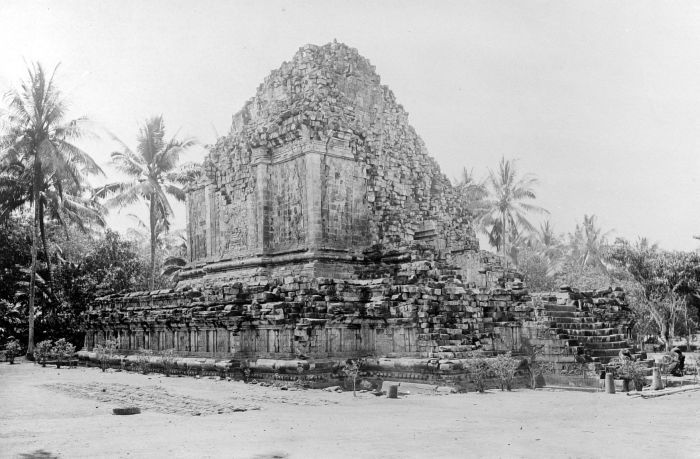 |
| Candi Prambanan 1 |
 |
| Candi Prambanan 2 |
 |
| Splendid night view |
Prambanan Temple or Roro Jonggrang Temple is the largest Hindu temple complex in Indonesia built in the 9th century AD. This temple is dedicated to Trimurti, the three major Hindu gods of Brahma as the creator god, Vishnu as the nurturing deity, and Shiva as the god of destruction. Based on the inscription of Siwagrha the original name of this temple complex is Siwagrha (Sanskrit meaning 'House of Shiva'), and indeed in garbagriha (main room) this temple resides in the statue of Shiva Mahadewa as high as three meters indicating that in this temple Shiva god takes precedence.
The temple complex is located in Prambanan, Sleman and Prambanan sub-districts, Klaten, approximately 17 kilometers north-east of Yogyakarta, 50 kilometers southwest of Surakarta and 120 kilometers south of Semarang, just on the border between Central Java and Yogyakarta Special Provinces. very unique, Prambanan Temple is located in the administrative area of Bokoharjo village, Prambanan, Sleman, while the entrance of the Prambanan Temple complex is located in the administrative area of Tlogo village, Prambanan, Klaten.
This temple is including UNESCO World Heritage Site, the largest Hindu temple in Indonesia, as well as one of the most beautiful temples in Southeast Asia. The architecture of this building is tall and slender in accordance with the Hindu architecture in general with the Shiva temple as the main temple has a height reaching 47 meters towering in the center of the complex of smaller temple clusters.As one of the grandest temples in Southeast Asia, Prambanan temple became an attraction tourist visits from all over the world.
According to the inscription of Siwagrha, this temple began to be built around the year 850 AD by Rakai Pikatan, and continues to be developed and expanded by Balitung Maha Sambu, during the Medang Mataram empire.
Copyright Image Flickr
Max.grassi
Location
cental java,Indonesia
Download Full-Res Image 1
Download Full-Res Image 2
Copyright Image Flickr
wuryantoro soeharto
Location
Yogyakarta,Indonesia
Download Full-Res Image
































